One UI has an exciting privacy feature that lets you lock apps, photos, videos, and files on your Galaxy device behind Samsung's defense-grade Knox security platform. Only you can unlock it using a pattern, PIN, passcode, and/or biometrics like fingerprints and iris scanning. It's like having a safe built right into your smartphone, and it couldn't be easier to set up.
Embarrassing photos. Private videos. Bank accounts. Password lists. Dating apps. These are just a few examples of the type of content you may want to stash away from prying eyes and malicious attacks. And they can all go into the encrypted Secure Folder, Samsung's protected vault for Galaxy devices.
What is Samsung's Secure Folder?
Samsung's Secure Folder feature is a sandboxed environment that's completely isolated from the rest of your Galaxy device. You can't access anything you add to it from outside the Knox-protected vault, but you can authenticate yourself to view its contents whenever you like. Secure Folder is also protected from external access methods like USB-connected devices and Wi-Fi Direct.
According to Samsung, "If your mobile device detects any rooting or custom ROMs, Secure Folder will automatically lock up in order to prevent unauthorized access, in which case you will no longer be able to access or use the contents within Secure Folder." That's the one downside to using Secure Folder, but it's to better secure all of your content from outside forces.
Samsung suggests that "you back up any important applications or data elsewhere, such as on your personal computer, before moving them to Secure Folder."
Compatible devices
Secure Folder is available on but not limited to the phones listed below. It can also be downloaded and installed from the Galaxy Store and works with most Samsung phones and tablets running Android N (7.0) or above.
Samsung Galaxy S6 and newer
Samsung Galaxy Note 5 and newer
Samsung Galaxy Z Fold and newer
Samsung Galaxy Z Flip and newer
Samsung Galaxy A3 (2016) and newer
Samsung Galaxy J5 Pro and newer
However, you'll probably have a smoother experience on models with newer software. The below devices support One UI 5 and later (Android 13 and later).
Samsung Galaxy S20 and newer
Samsung Galaxy Note 20 and newer
Samsung Galaxy Z Fold 2 and newer
Samsung Galaxy Z Flip and newer
And select Samsung Galaxy A series models from 2019 and later
Open the Secure Folder settings
On your Galaxy device, navigate to the Secure Folder settings. You can type Secure Folder into the search tool in the Settings app or navigate to it directly. The menu location has changed throughout the years, but here are some examples of where you could find it:
One UI 6: Settings » Security and privacy » More security settings » Secure Folder
One UI 5: Settings » Security and privacy » Secure Folder
One UI 4: Settings » Biometrics and security » Secure Folder
Samsung Experience 10: Settings » Biometrics and security » Secure Folder
Samsung Experience 9: Settings » Lock screen and security » Secure Folder
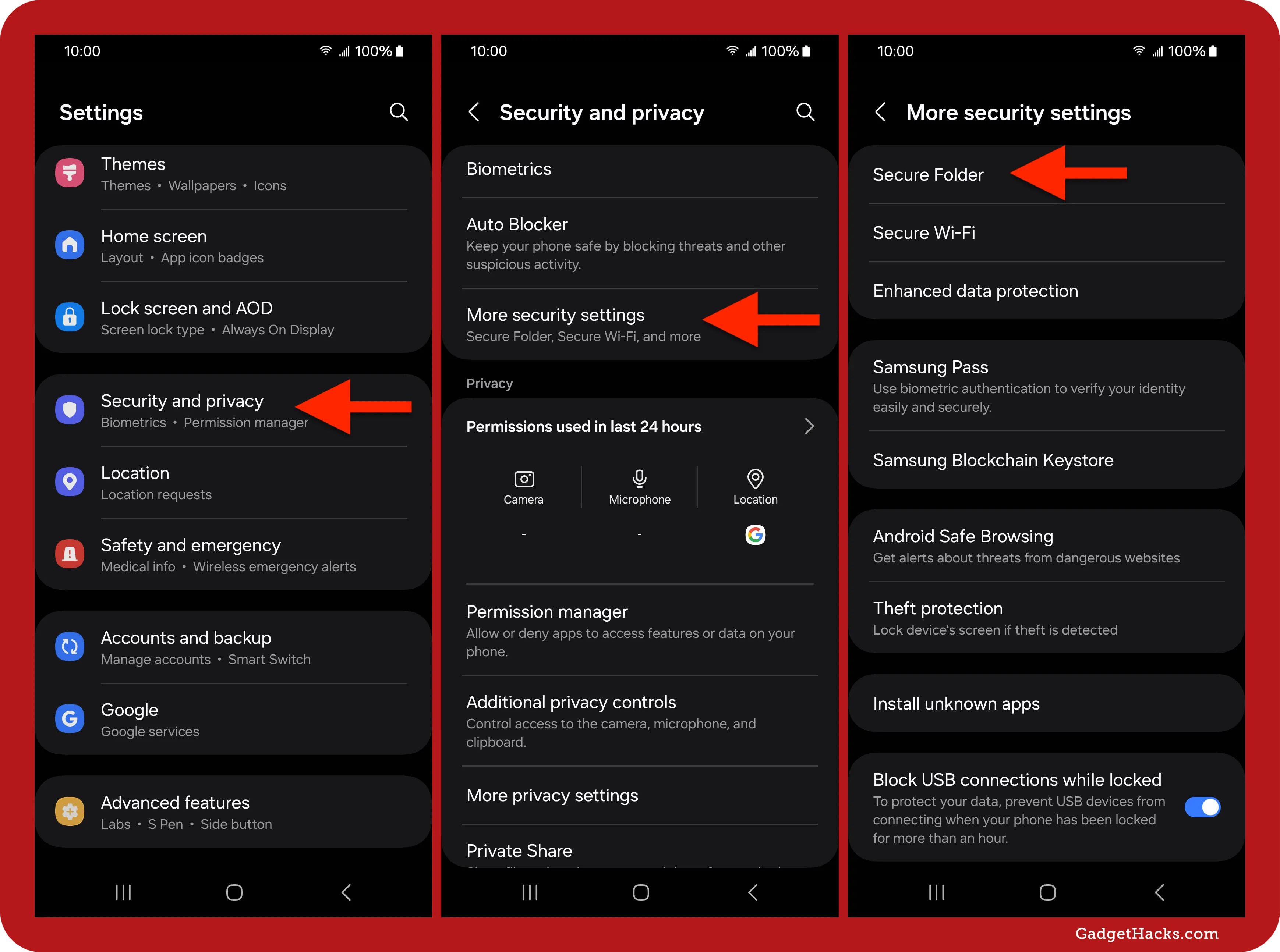
When you see the "Welcome to Secure Folder" information screen, tap Continue. If you're already logged into your Samsung Account, which is needed for Secure Folder, it will jump right to asking you for permissions. If not, follow the prompts to either create an account or log in, which will get you to the permissions screen.
Secure Folder needs permission to access your calendar, contacts, photos and videos, music and audio, and phone app. Then, wait a few moments while your Samsung Galaxy creates your Secure Folder.
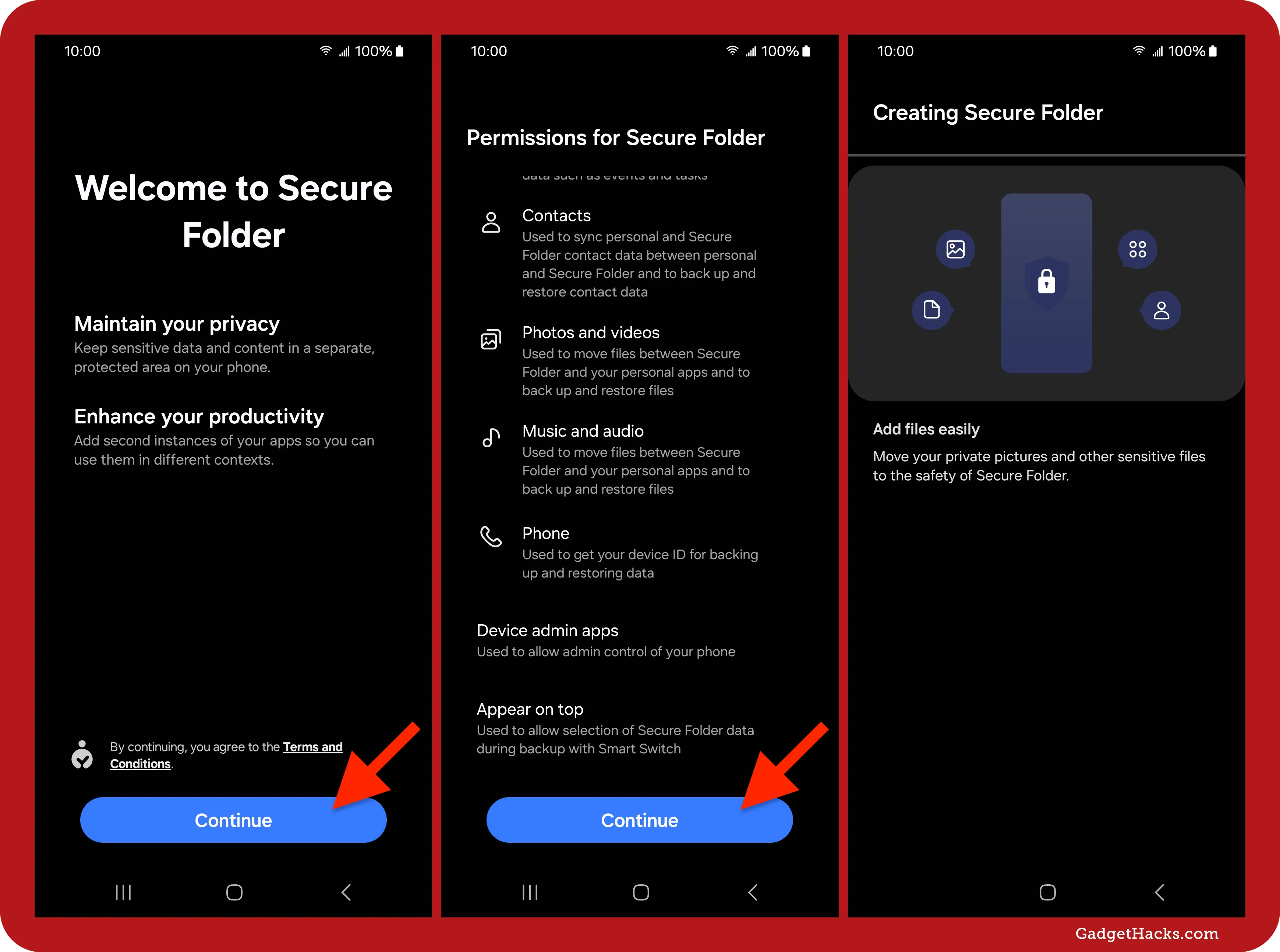
Choose your unlock method
The next page is where you pick the unlock method to use with Secure Folder. Hit the Done button on the "Set a pattern, PIN, or password" alert to see the full lock type menu, which states:
Select a lock type to protect your apps and private files. If you forget how to unlock Secure Folder, you can reset your lock using your Samsung account.
You can choose between Pattern, PIN, and Password, and you can also toggle on Fingerprints or Iris as biometric keys to your encrypted Secure Folder. If you choose a biometric method and don't have it already set up on your device, follow the prompts to get everything ready. You can use fingerprint or iris biometrics with one of the regular lock types to get into your vault in two ways.

Locate your new Secure Folder
Now that your Secure Folder is created, you can find it on your Apps screen. It should take you right there. If not, you can access the App screen by swiping up on the Home screen.
Like any other app or folder on the Apps screen, you can add it to your Home screen for easier access. To do so, long-press Secure Folder and tap Add to Home, or long-press and drag and drop the Secure Folder icon to the exact place on the Home screen where you want it.
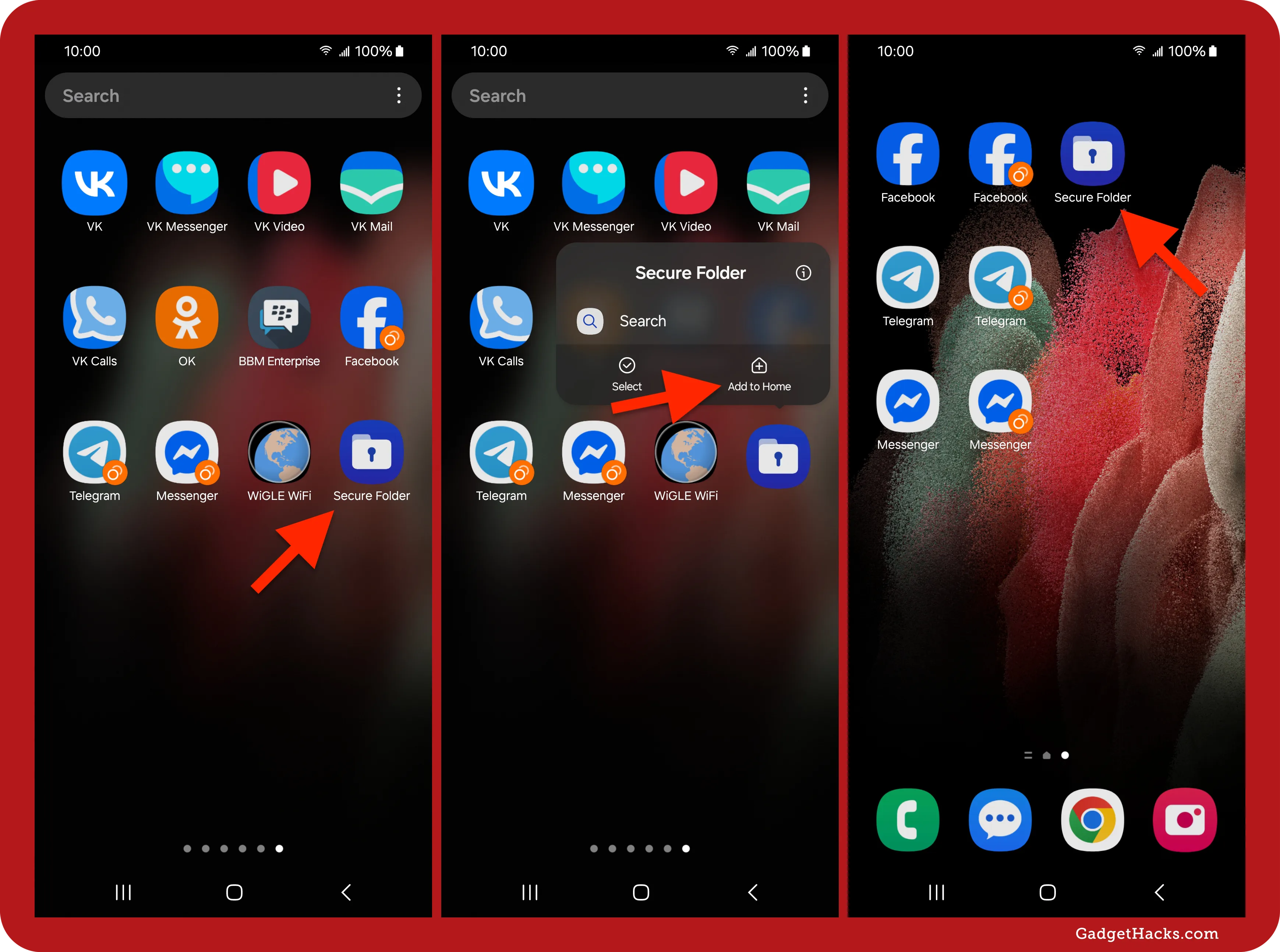
Open your Secure Folder
Tap on the Secure Folder icon to open it, then use biometrics or your pattern, PIN, or password to authenticate yourself.
You may already see Samsung apps like Calendar, Camera, Contacts, Gallery, Internet, My Files, and Notes in your Secure Folder. That's because Samsung thinks you're most likely to need those to lock down private photos and videos, certain contacts, specific files, private events, etc.
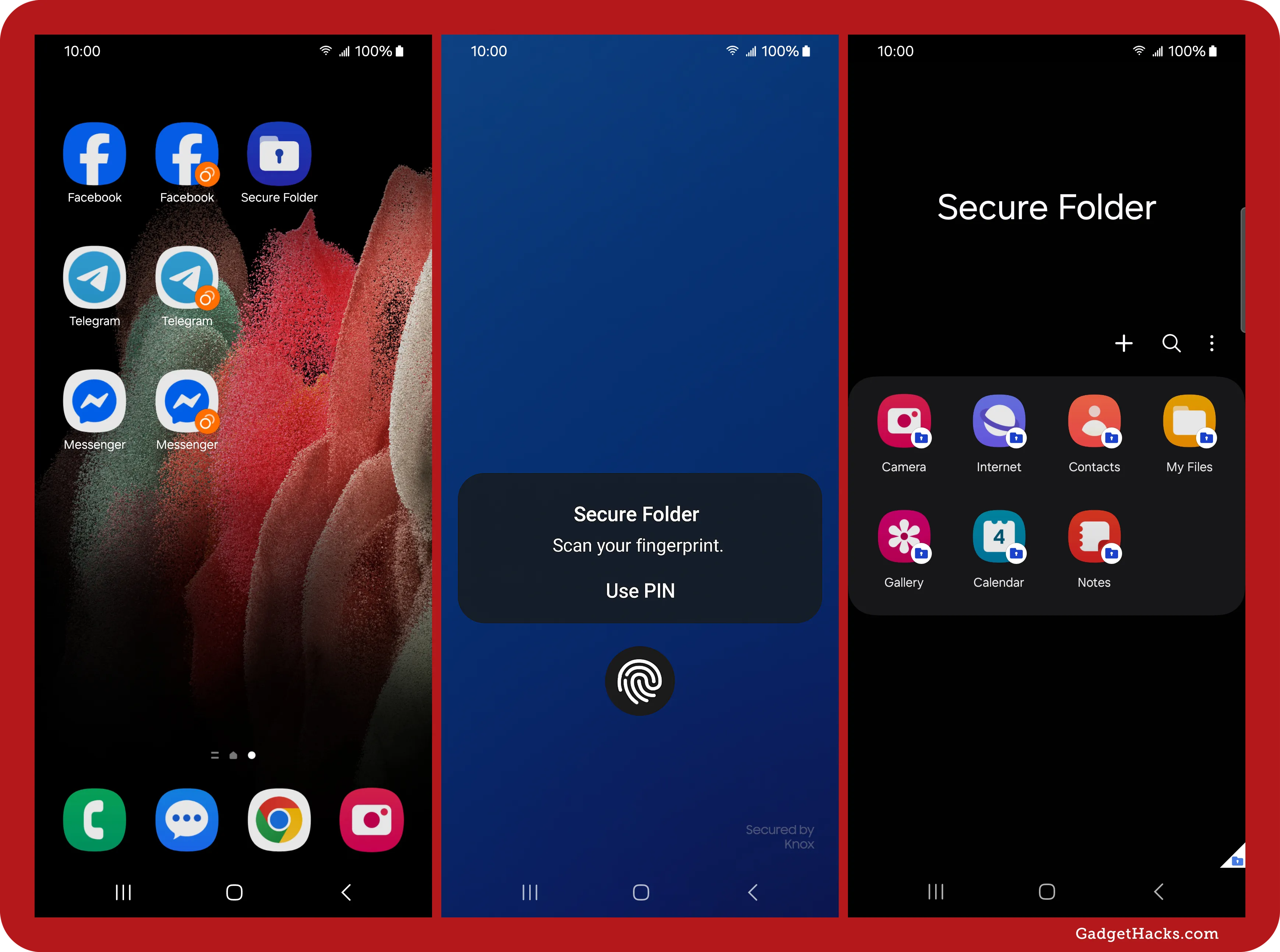
Add apps to Secure Folder
To include more apps in the folder, tap the plus (+) sign, select the app or apps you need from the list, and tap Add. Any apps you add this way will be copied into your Secure Folder, not moved. So, instead of hiding the app behind lock and key, you're hiding a copy of the app.
Don't Miss: How to Clone Any Android App on Your Samsung Galaxy Phone Without Using Any Third-Party Tools

However, you can have an app reside in Secure Folder only. To do so, tap the plus (+) sign and choose Download from Play Store or Download from Galaxy Store. For Google Play, you may need to sign in to your Google account from within the sandboxed environment. Any apps you install from these app stores via the Secure Folder will only appear in the Secure Folder.
As discussed above, if you clone an app into Secure Folder, you can delete the original app from your Apps or Home screen so that only the secure version remains.
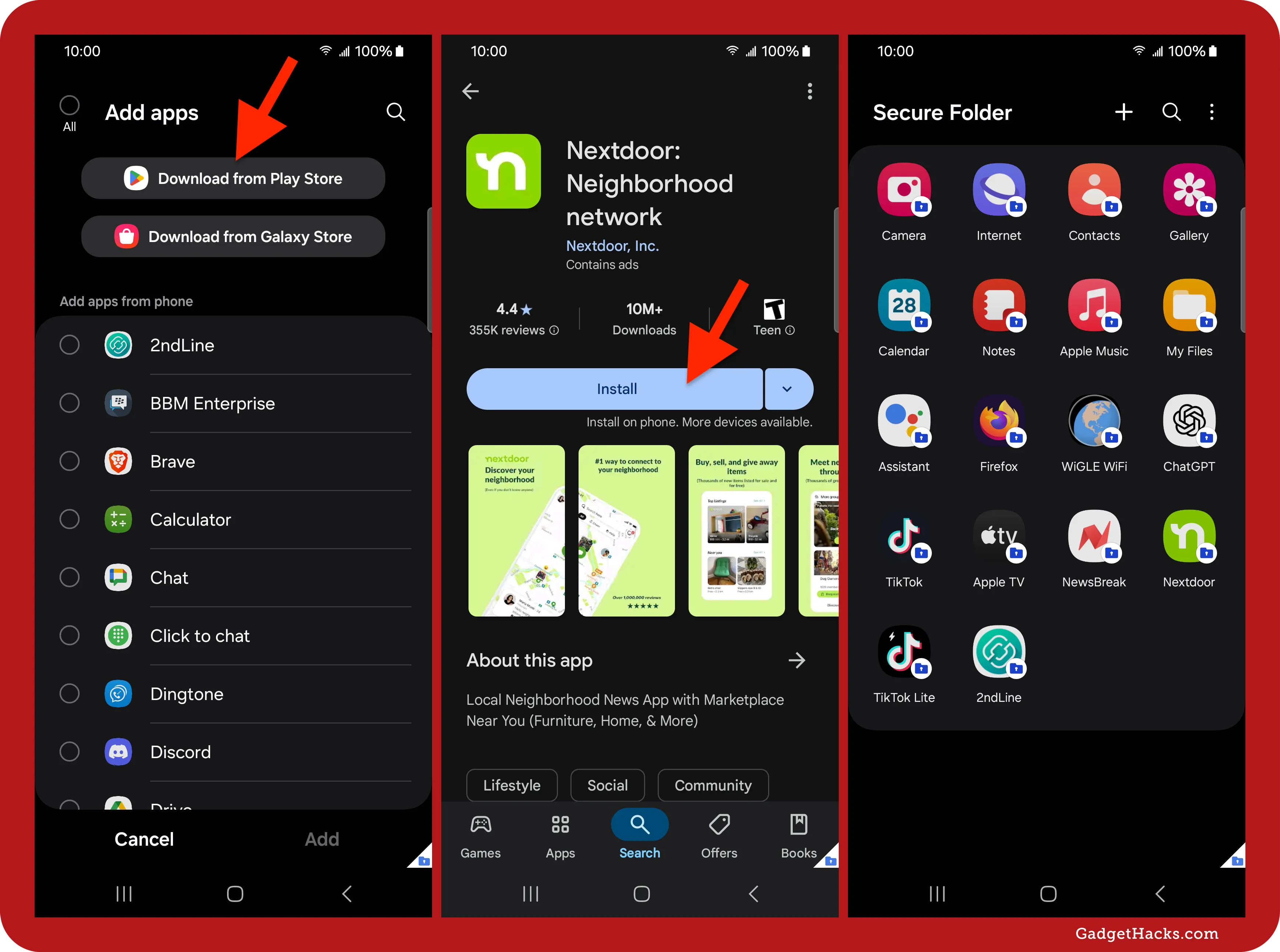
Note that opened apps housed within Secure Folder will have the Secure Folder icon on their own icon in the app switcher. That way, you know which version is which if you have a version of the app in and out of the sandboxed environment.

Add files to Secure Folder
To add files such as documents, images, videos, and audio files, open Secure Folder, tap the vertical ellipsis, then choose Add files. A pop-up will appear with the categories you can use to select content to copy or move into Secure Folder.
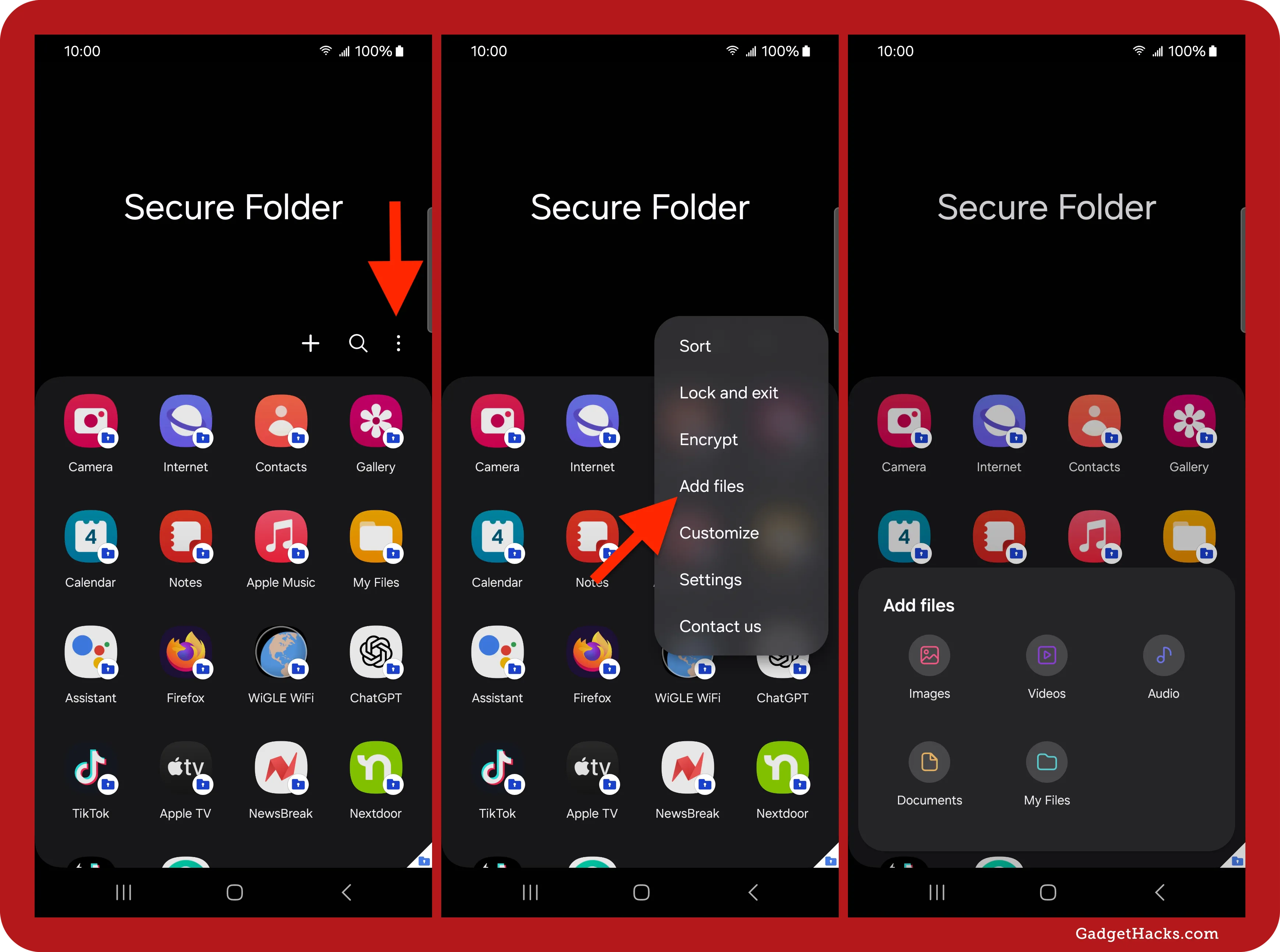
Select a category, find and highlight the content you want to copy or move, and then hit Done. Next, choose to Copy or Move it to Secure Folder.
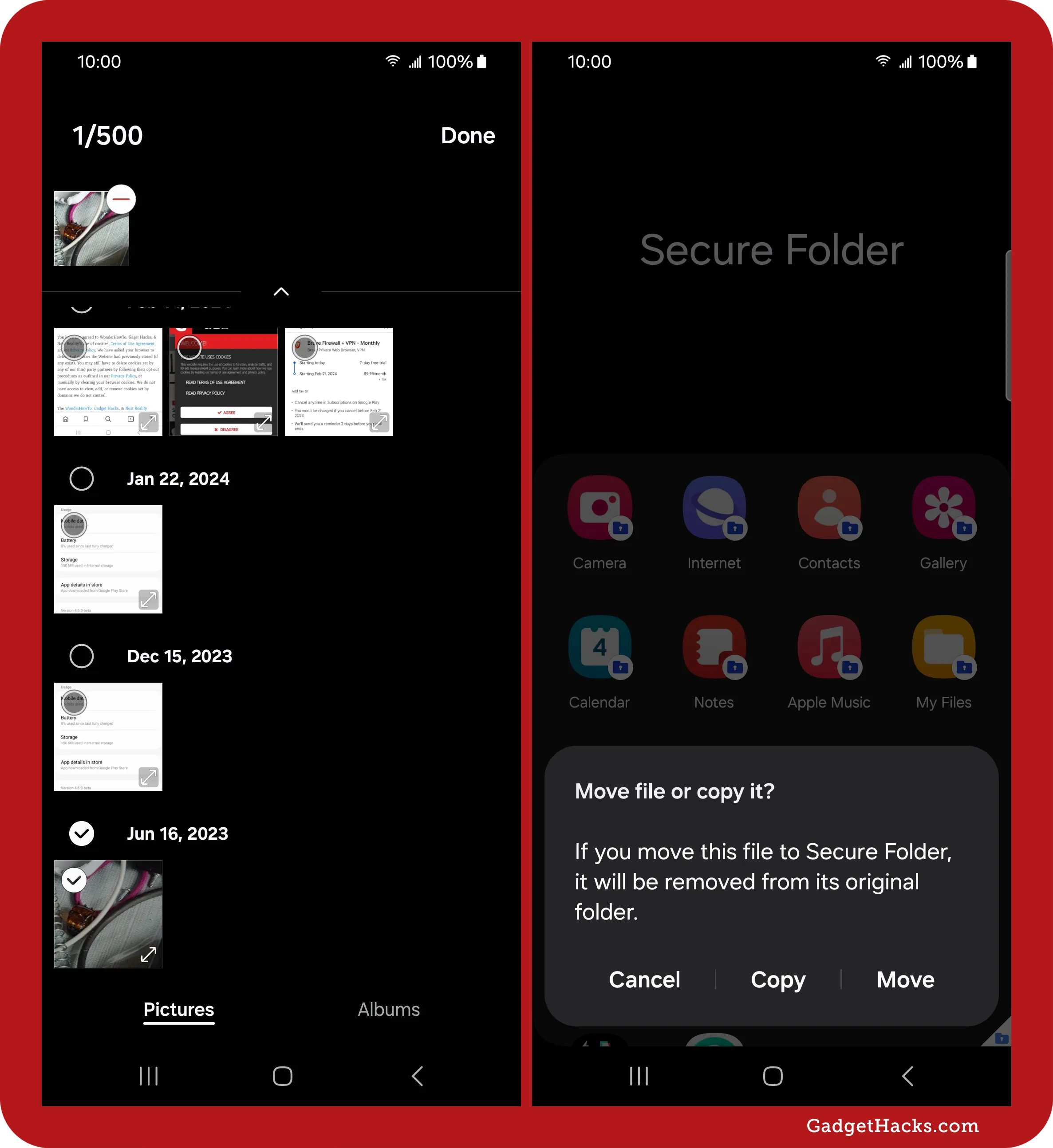
You can also add files to Secure Folder from outside of Secure Folder. For example, to move a photo or video from the Gallery app, select it, tap More, and choose Move to Secure Folder. The item will then disappear from the current view. It's similar in My Files; Select the file, tap More, and choose Move to Secure Folder.
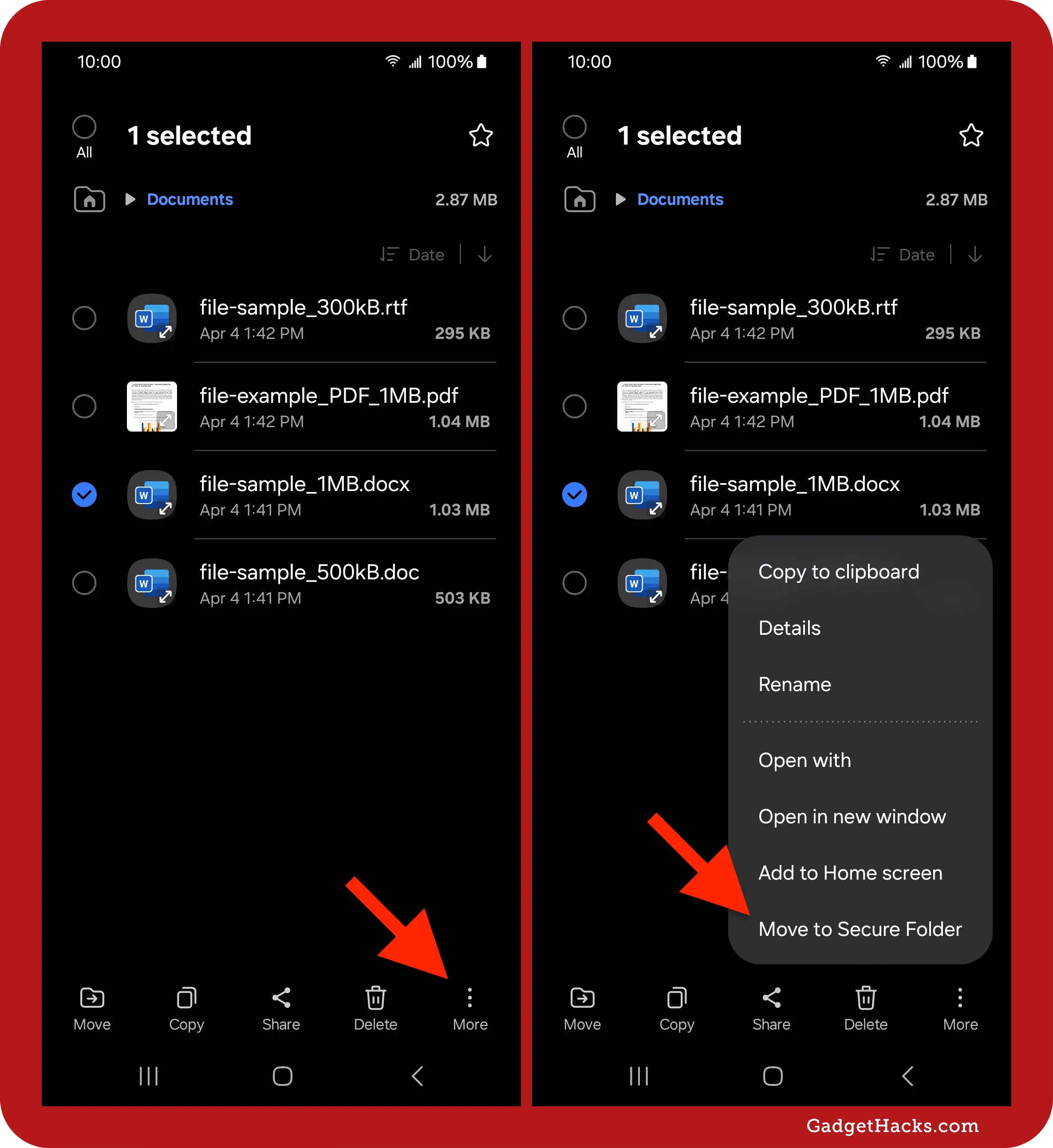
If you don't want to move it, there's a way to copy it instead. To do so, hit the Share button after selecting the file or files, then choose Copy to Secure Folder from the options. If you don't see Copy to Secure Folder, swipe to and select More, pick Secure Folder, authenticate yourself if needed, and then hit Copy to Secure Folder.
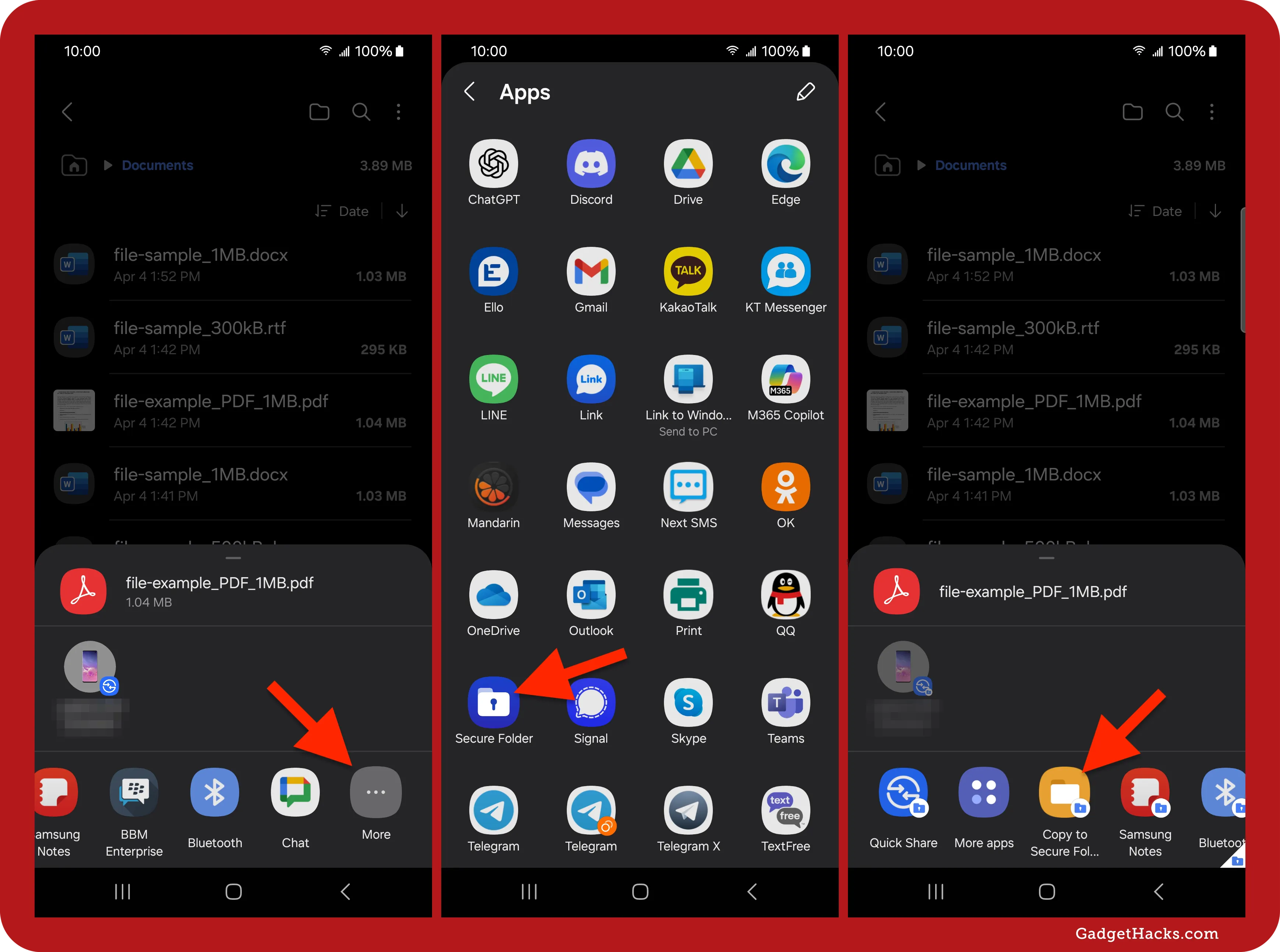
The process above is similar if you want to move files out of Secure Folder back to their respective unlocked apps. However, if the content was previously located on your SD card before moving it to Secure Folder, moving it back on may move it to your internal storage instead.
Customize Secure Folder's look
Secure Folder lets you change its app icon, app icon color, and app name. This is helpful if you want other people with access to your Galaxy device from knowing it's the Secure Folder.
To change the look, tap the vertical ellipsis from within Secure Folder, then choose Customize. Make your changes, then hit Apply to save them. To return to the default look, open the customization settings again and hit Reset.
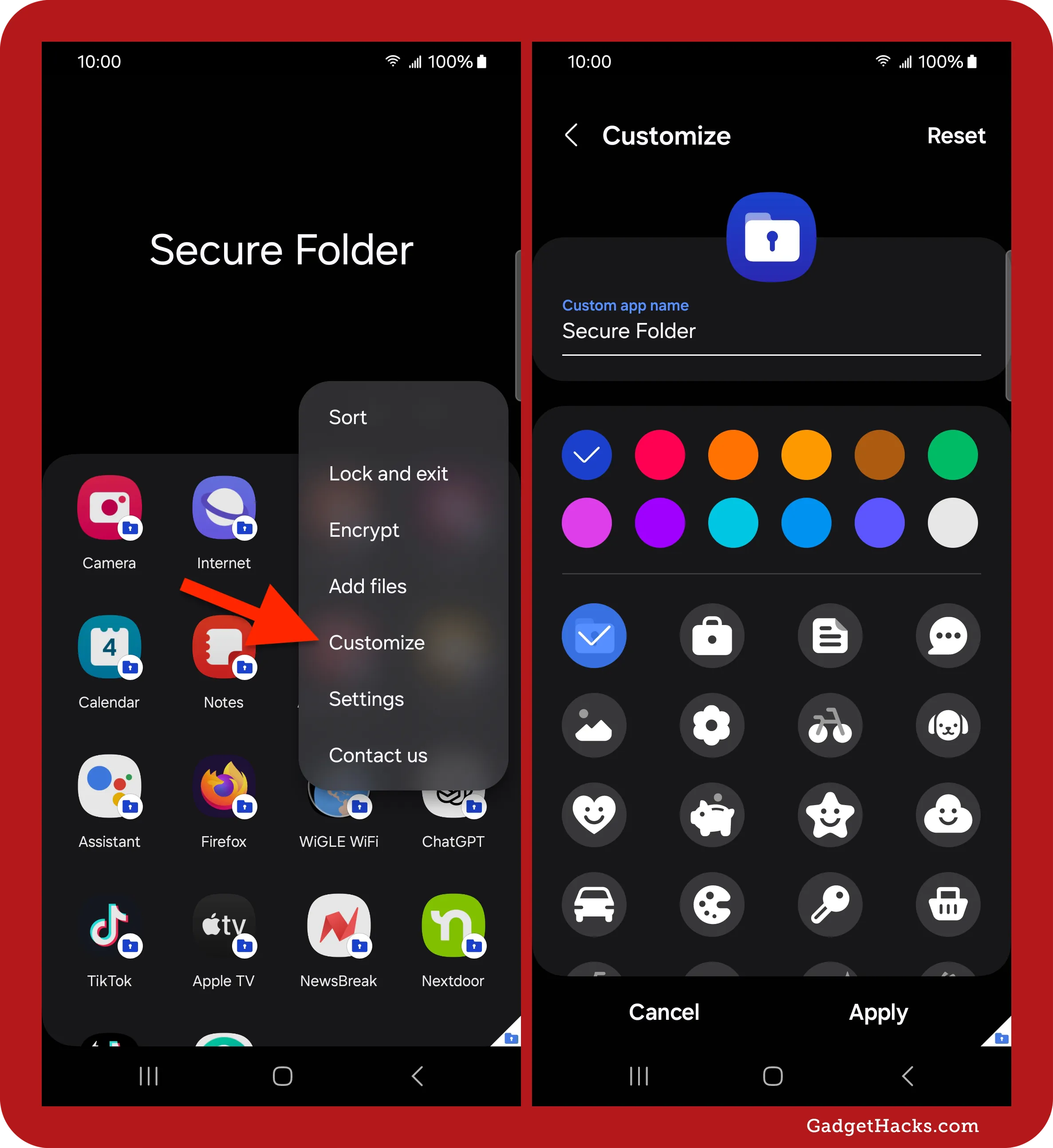
Adjust Secure Folder's settings
From the Secure Folder, you can select Settings from the vertical ellipsis menu to change some of the folder's preferences. You can also navigate to these settings using one of the following paths.
One UI 6: Settings » Security and privacy » More security settings » Secure Folder
One UI 5: Settings » Security and privacy » Secure Folder
One UI 4: Settings » Biometrics and security » Secure Folder
Samsung Experience 10: Settings » Biometrics and security » Secure Folder
Samsung Experience 9: Settings » Lock screen and security » Secure Folder
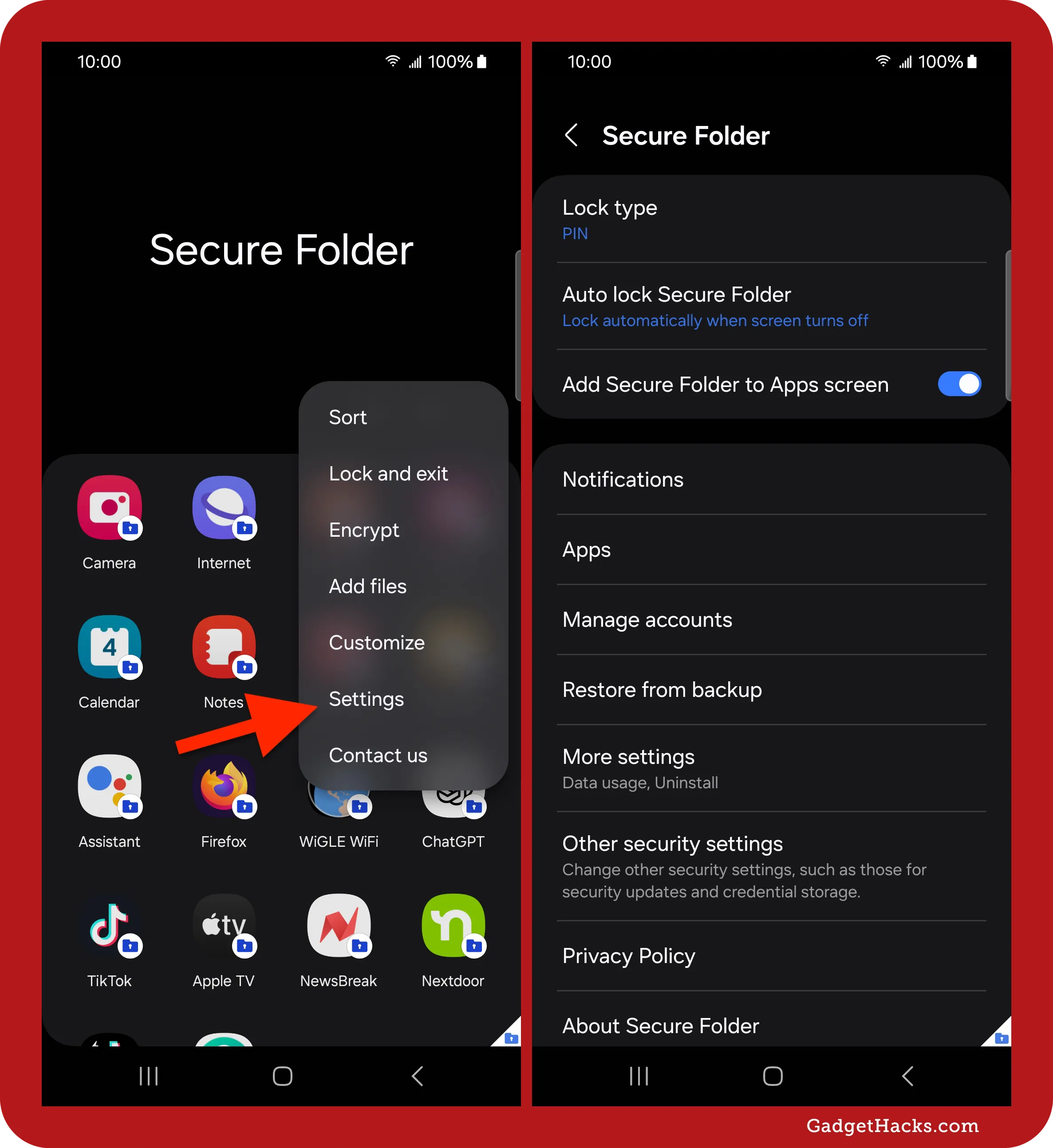
For instance, you can tap Lock type to change your current type to a pattern, PIN, or password or to enable or disable biometric unlocking.
Choosing Notifications from the preferences will let you show or hide content in notifications for the apps housed in Secure Folder, as well as disable or enable app notifications on a per-app basis. Visit Other security settings for toggles to show contact information, enable the clipboard, and turn on automatic data encryption. Tap Advanced settings to hide or show app icon badges, show or hide the snooze button, and more.
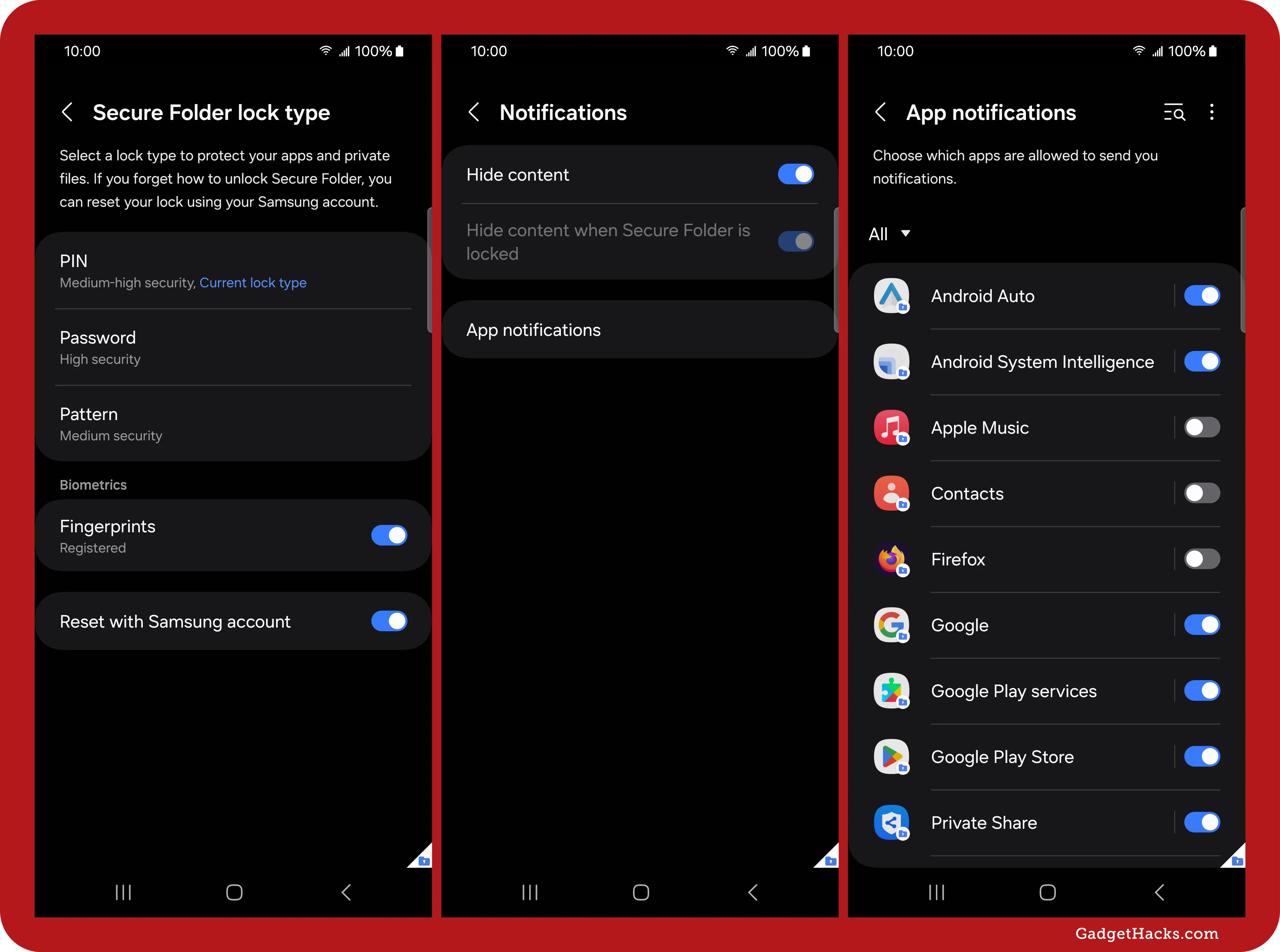
Lock Secure Folder from prying eyes
To keep Secure Folder protected, choose Auto lock Secure Folder from its settings and select the option that best fits your needs. You can lock it immediately each time you leave an app, whenever the screen turns off, after your phone restarts, or after a set time period. If you don't choose to lock it every time you leave Secure Folder, you can still tap the vertical ellipsis in Secure Folder, followed by Lock and exit, to lock it manually.
You can also hide Secure Folder from the Apps and Home screens by toggling off the Add Secure Folder to Apps screen switch and choosing Hide. To unhide it, just come back and toggle the switch off. However, you will have to manually add Secure Folder to your Home screen again each time. Note that even when hidden, the Secure Folder remains active in the background unless it's also locked. To get back to the Secure Folder preferences, go to one of the following locations.
One UI 6: Settings » Security and privacy » More security settings » Secure Folder
One UI 5: Settings » Security and privacy » Secure Folder
One UI 4: Settings » Biometrics and security » Secure Folder
Samsung Experience 10: Settings » Biometrics and security » Secure Folder
Samsung Experience 9: Settings » Lock screen and security » Secure Folder
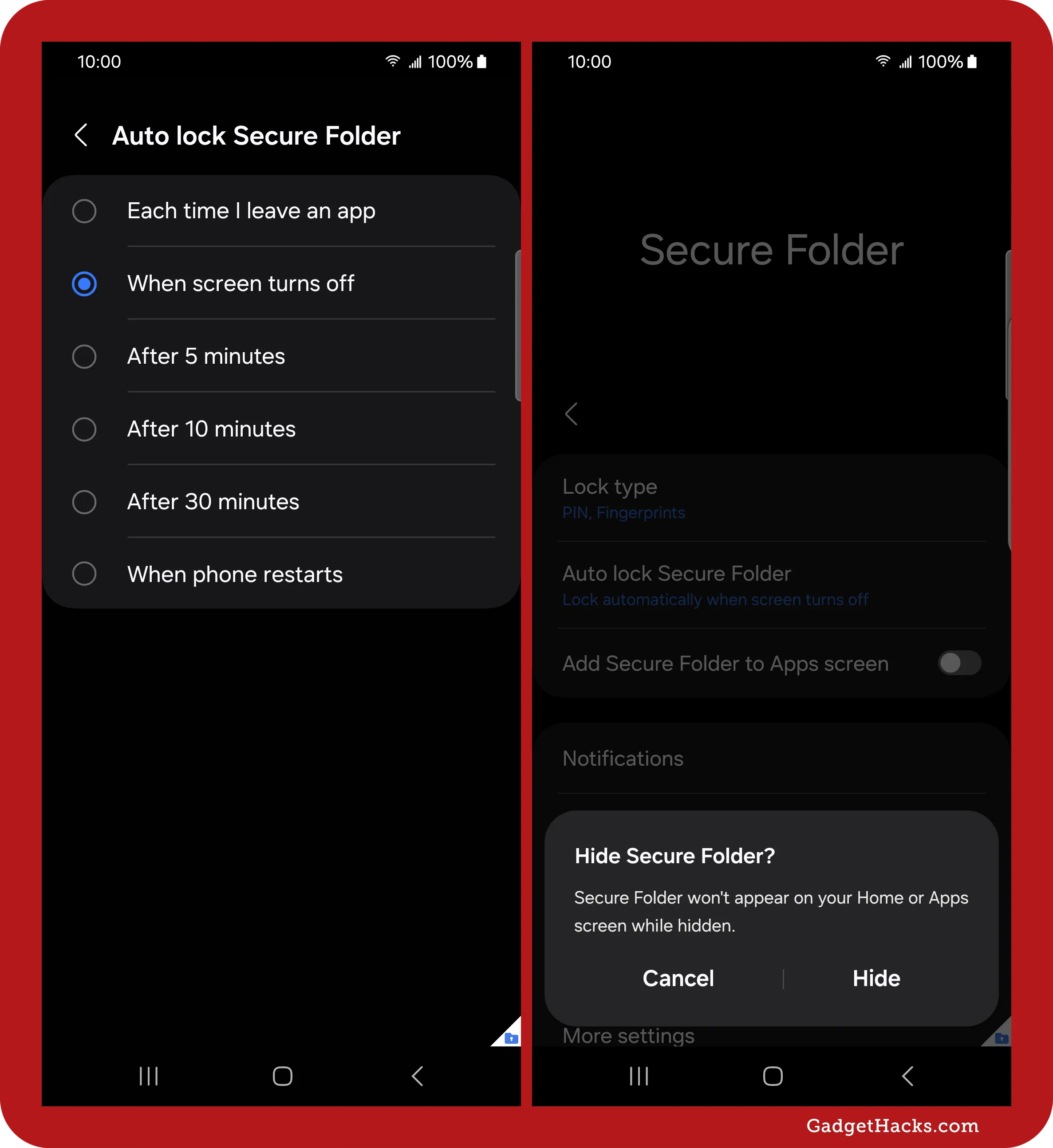
If you want to hide and unhide your Secure Folder frequently, open up your Quick Settings menu. Swipe down from the top of the display from any screen with two fingers. Then, tap the pencil icon, choose Edit for the Top portion, remove one of your buttons at the top if all the spots are full, then find and select Secure Folder button from the list of available options. Hit Done to save.
On older devices, swipe down from the top of the display with two fingers, tap the plus (+) button, locate the Secure Folder button, and move it to your accessible Quick Settings.

Whenever the icon is colored, it will appear on the Apps screen. When it's grayed out, it's hidden from your Apps and Home screens. Toggling it back on will unhide it in the Apps screen but not the Home screen, as when toggling it on and off directly in the Secure Folder settings menu.
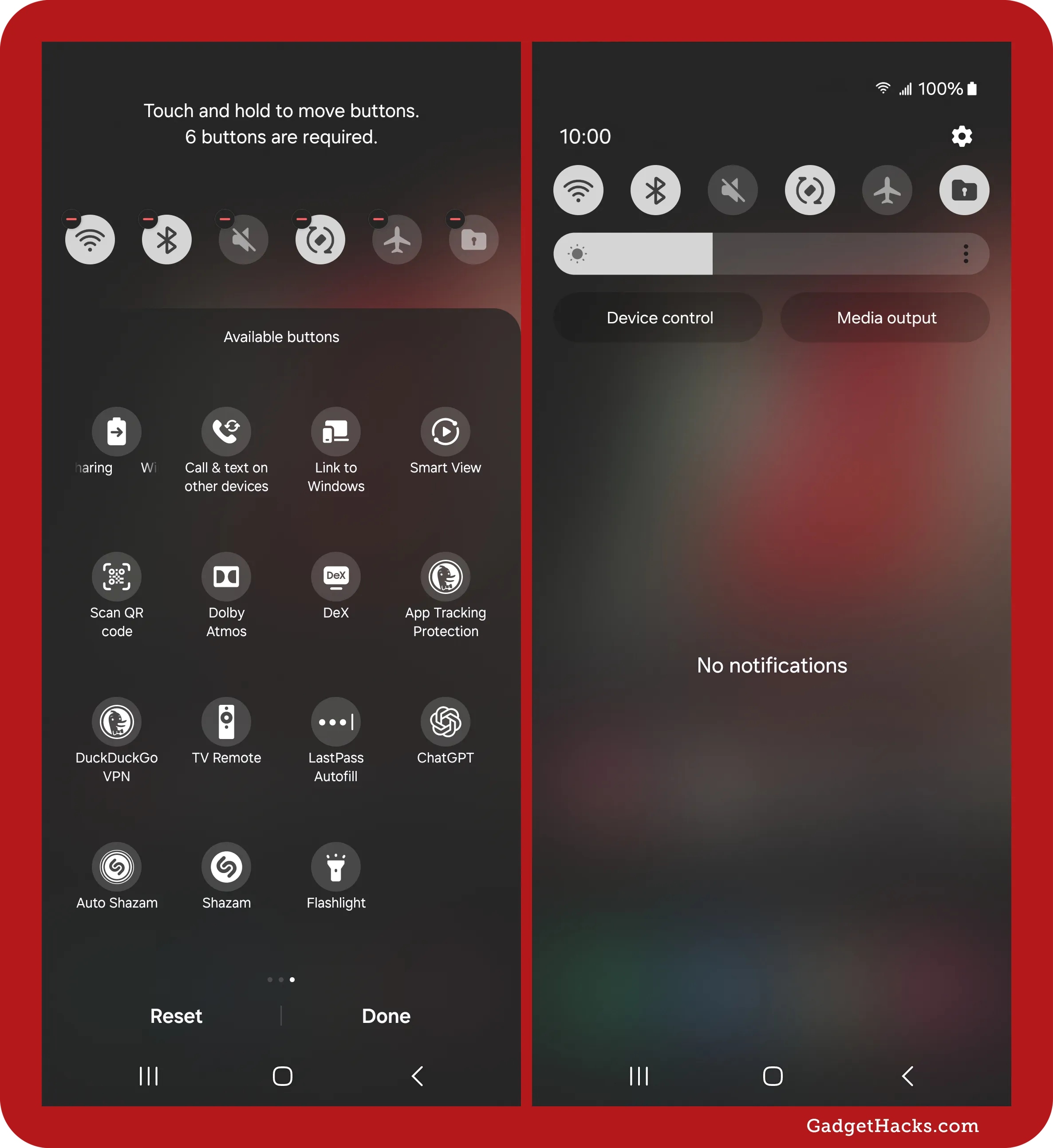
Encrypt Secure Folder for extra protection
Samsung now offers an extra layer of security for Secure Folder through a dedicated encryption feature. This goes beyond the default Knox-based protection, helping guard against more advanced cyber threats.
From the ellipsis menu in Secure Folder, tap Encrypt. Once encryption is activated, all apps inside Secure Folder will be paused, and you won't receive notifications from them. To reactivate them, simply open Secure Folder again. Encryption will be temporarily lifted while you're using it, and the apps will resume normal function.
This feature is ideal when you want to lock things down more aggressively — like when you're traveling or suspect a risk of physical access to your device.
Note that this manual encryption toggle differs from the default Knox-based encryption, which always protects Secure Folder in the background. The new feature lets you actively suspend Secure Folder functionality and notifications until you're ready to use them again.

How to uninstall Secure Folder
If you no longer need your Secure Folder, you can remove it and everything within. From the Secure Folder settings menu, tap More settings. On older Galaxy models, tap Menu or the vertical ellipsis at the top. Next, select Uninstall, followed by Uninstall again to confirm. You can move media out of the folder first or wipe everything without saving anything.
⚠️ Warning: Uninstalling Secure Folder will permanently delete everything inside unless you move or back it up beforehand.

Don't Miss: How to Hide Apps on Your Samsung Galaxy's Home Screen, App Tray, and Search
Cover photo and screenshots by Gadget Hacks.




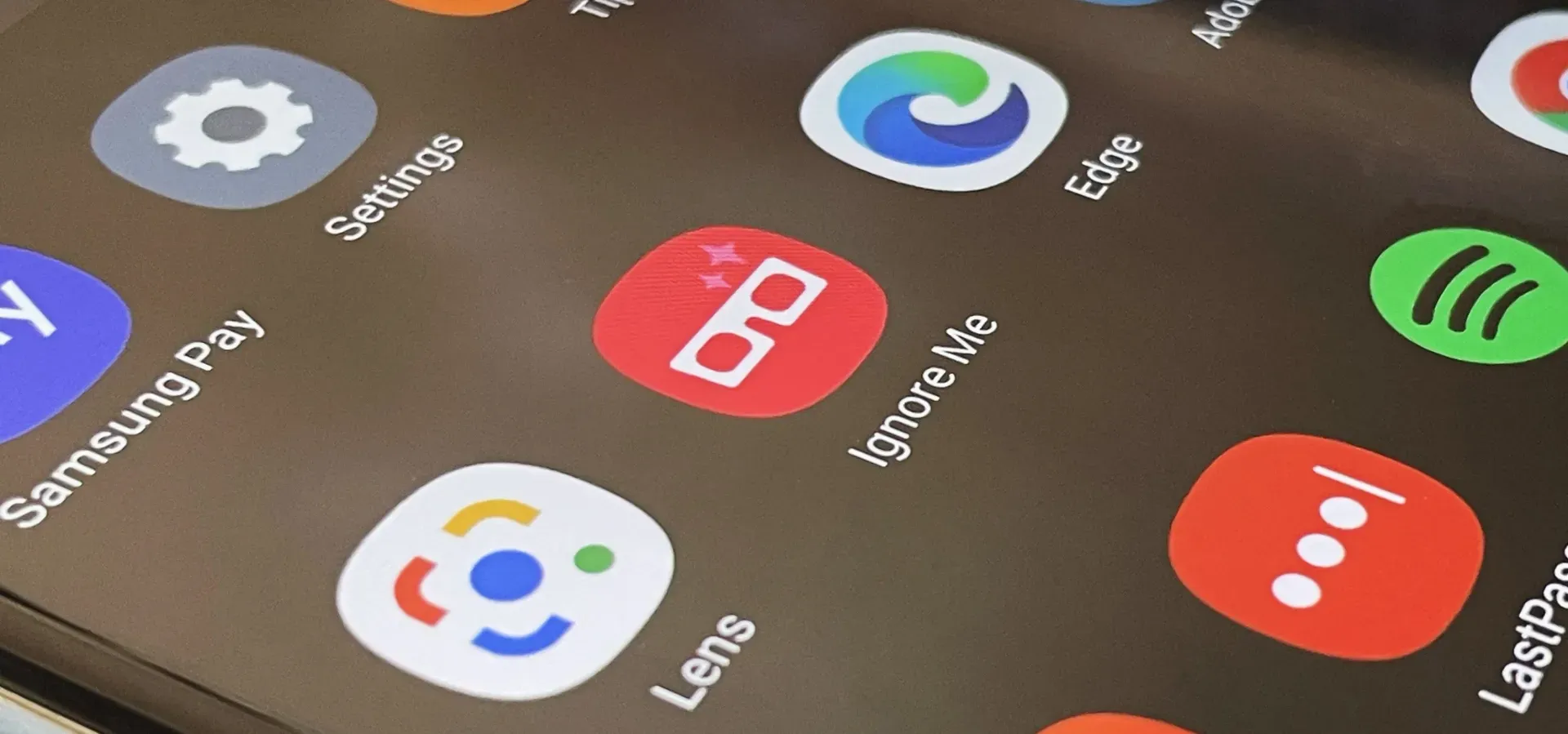

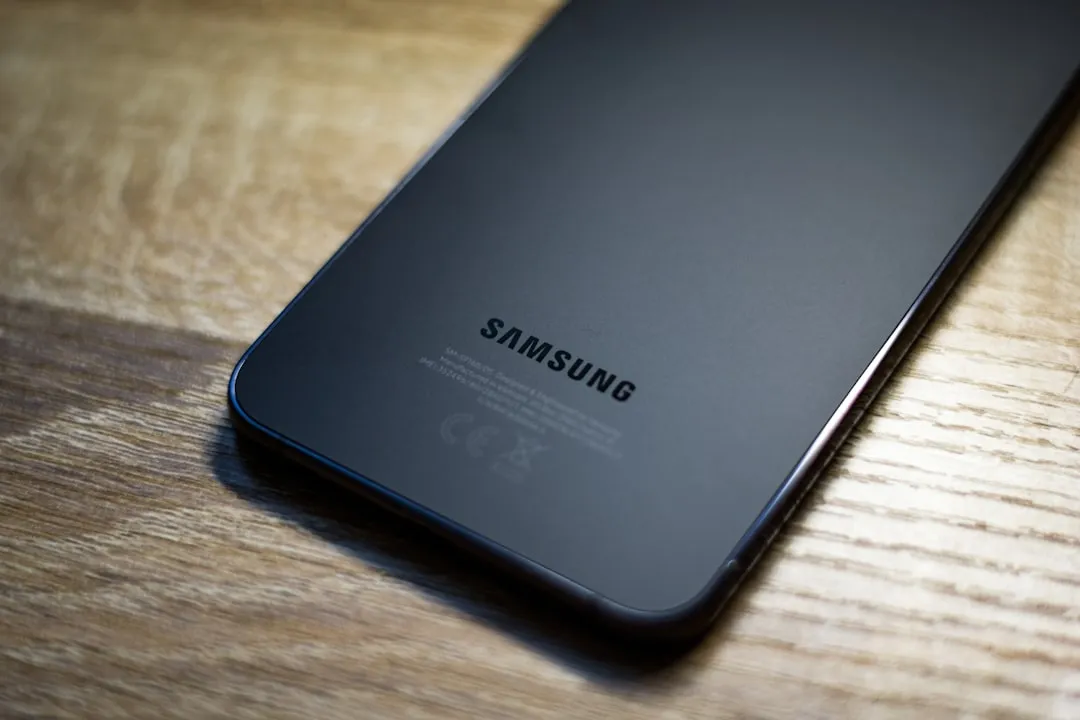

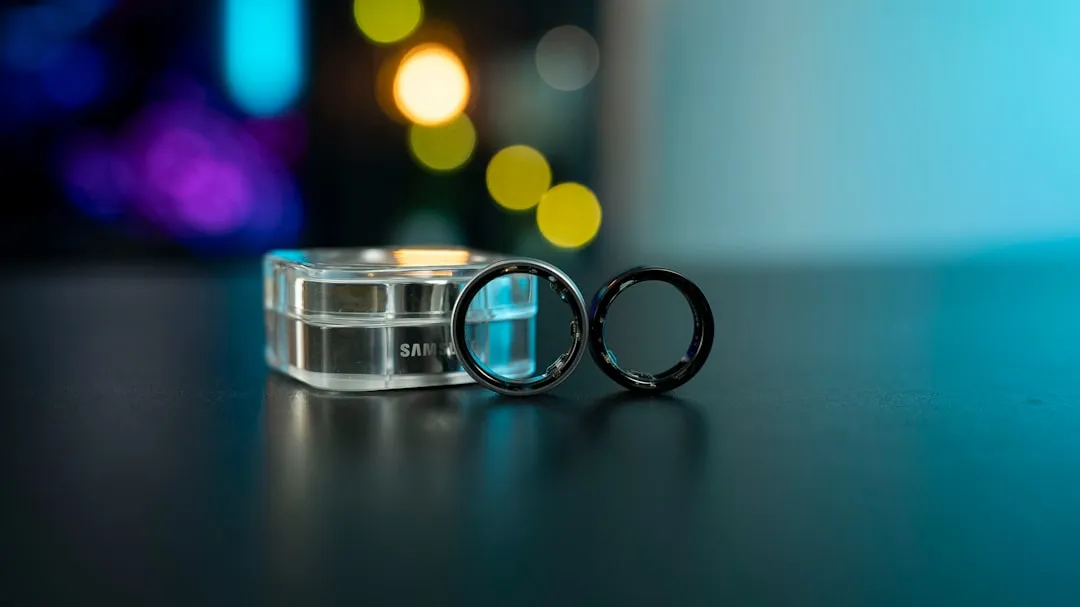

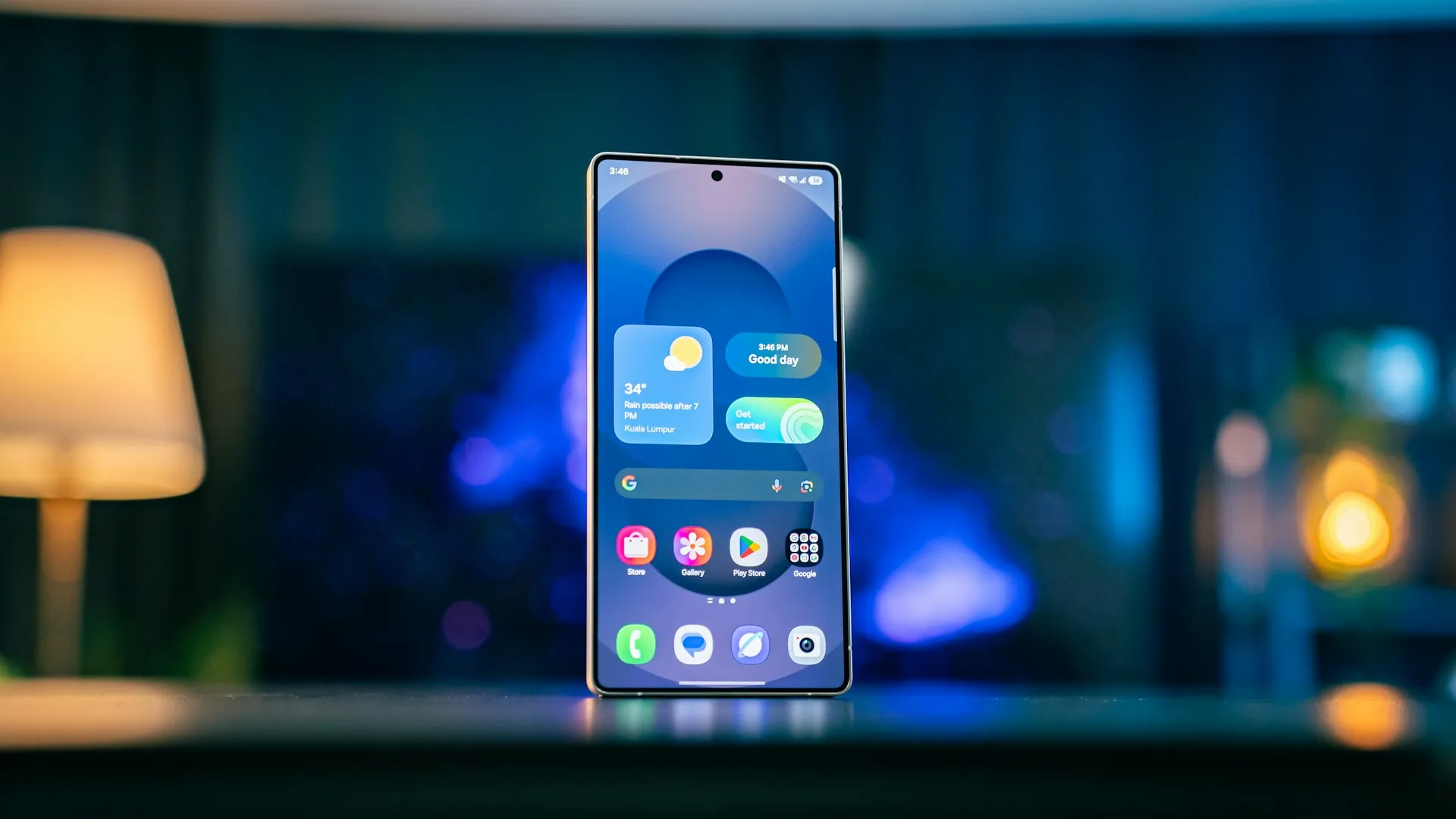
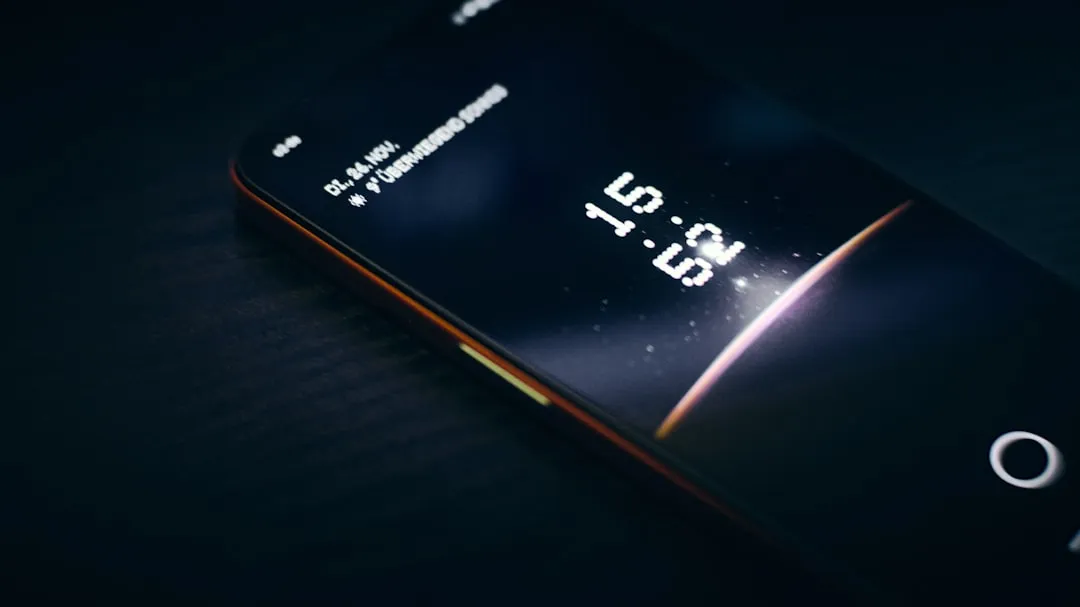
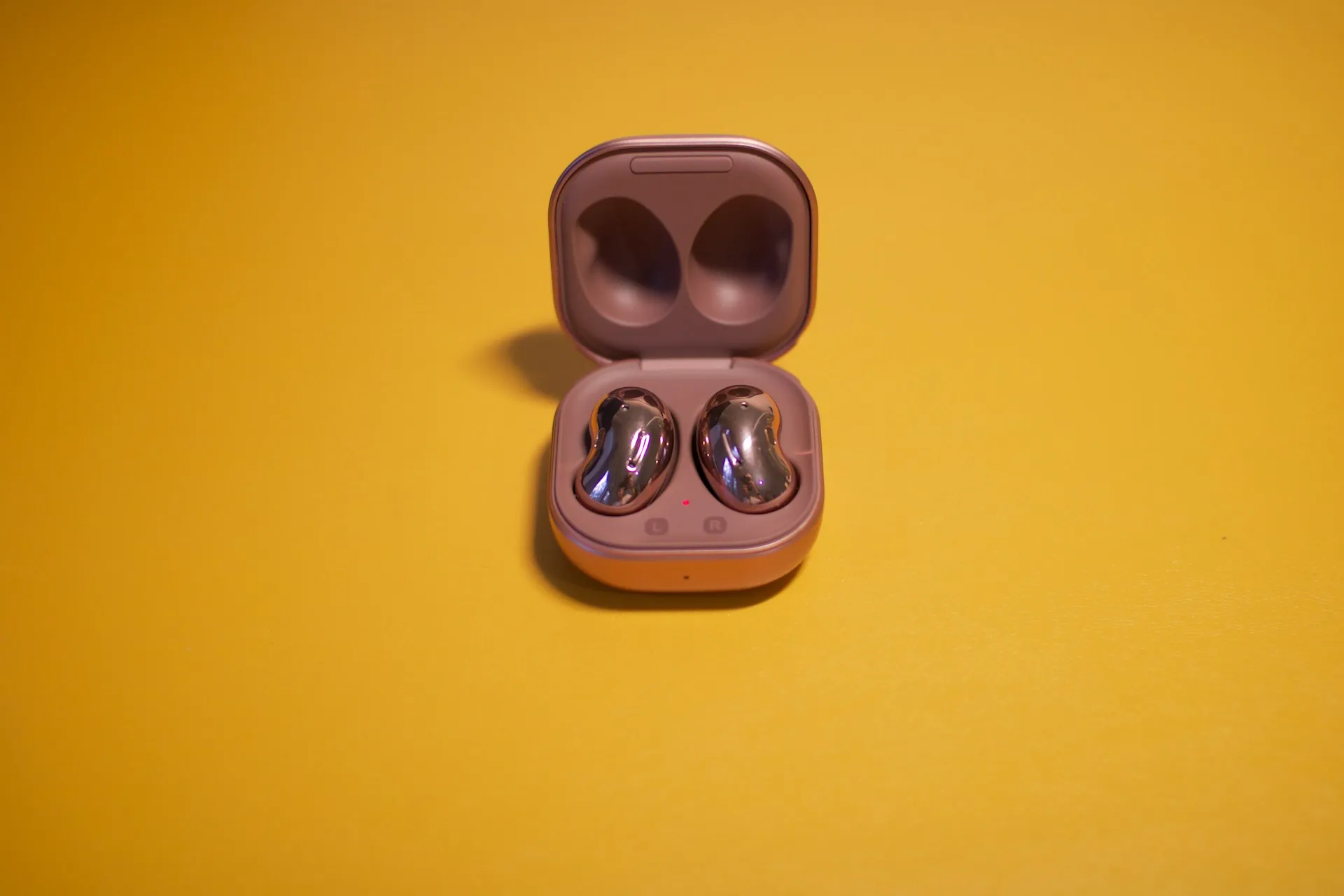

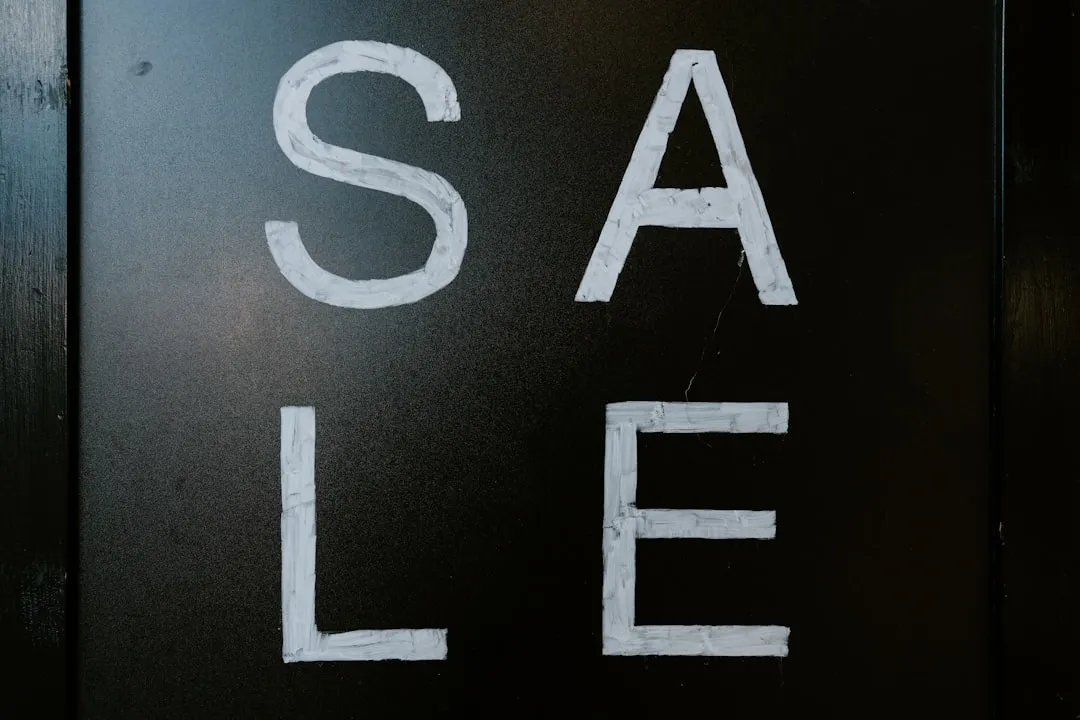


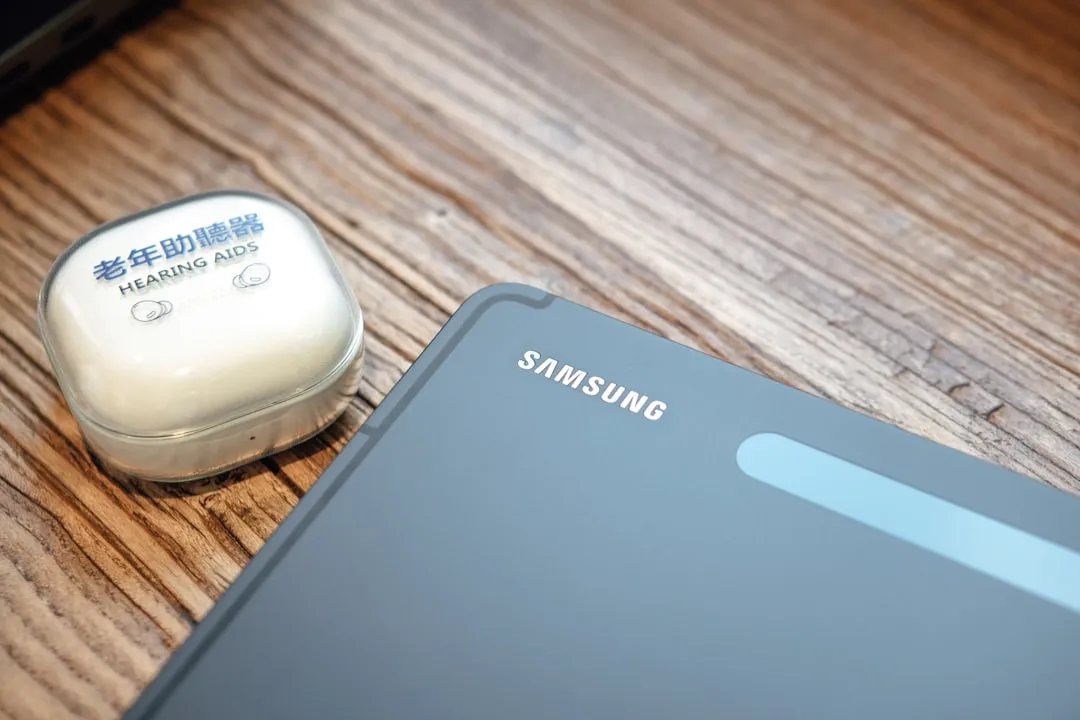


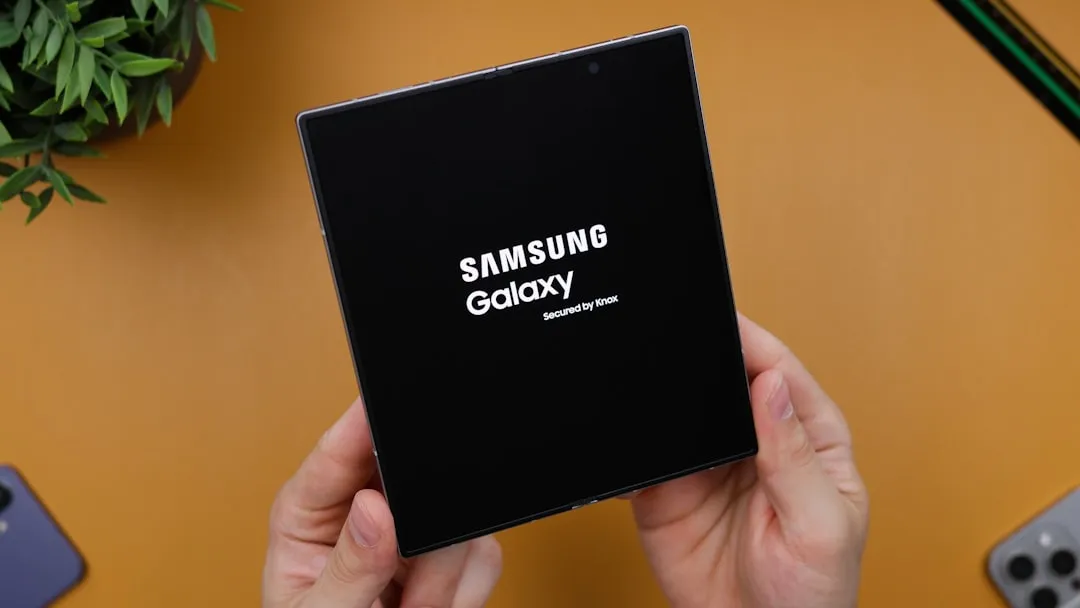
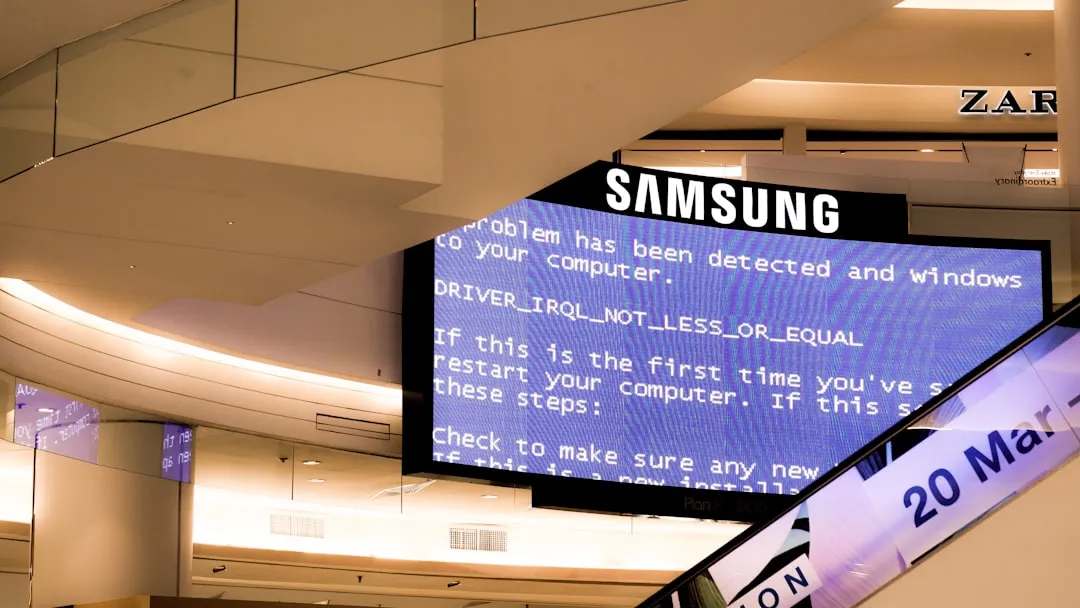

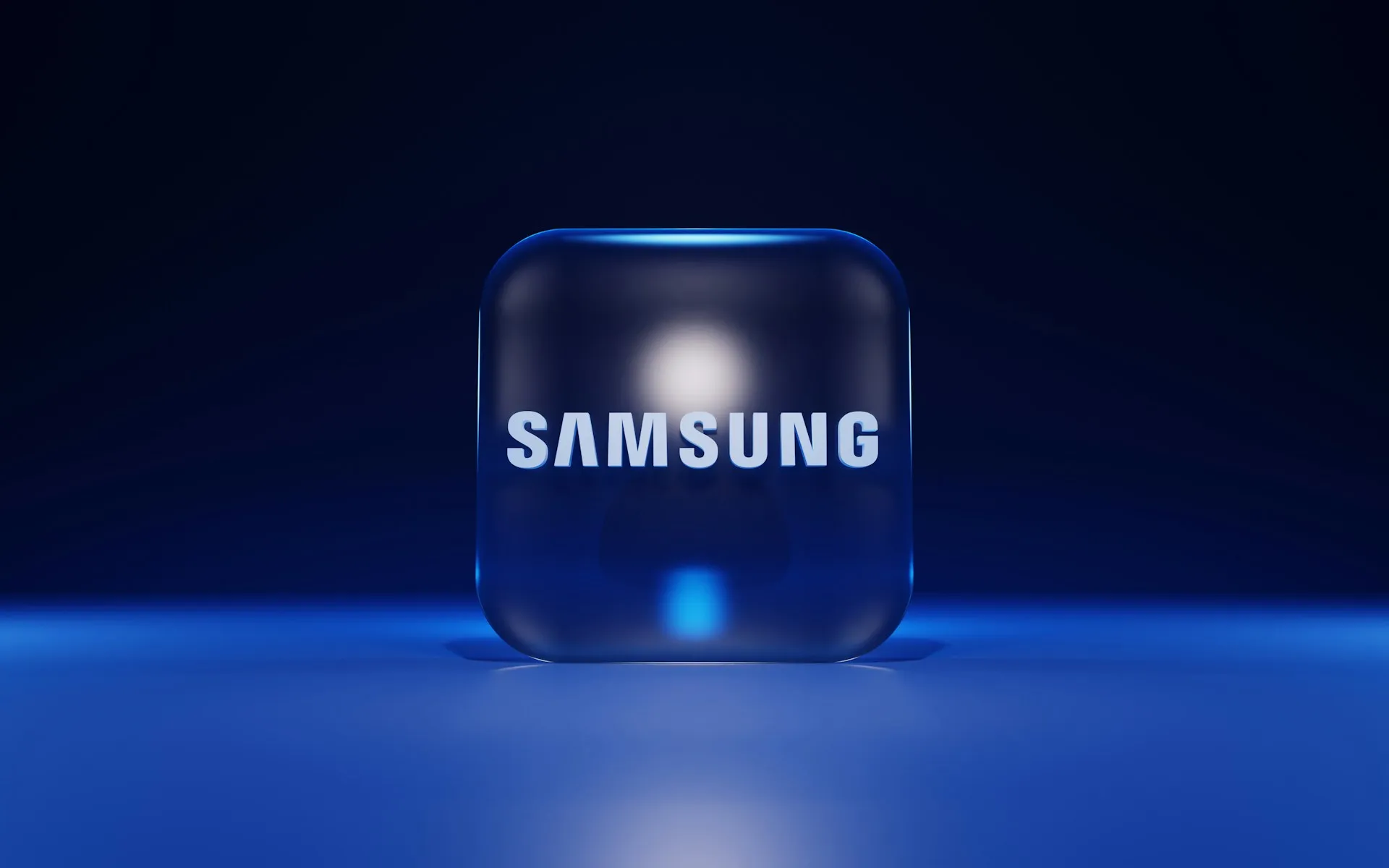
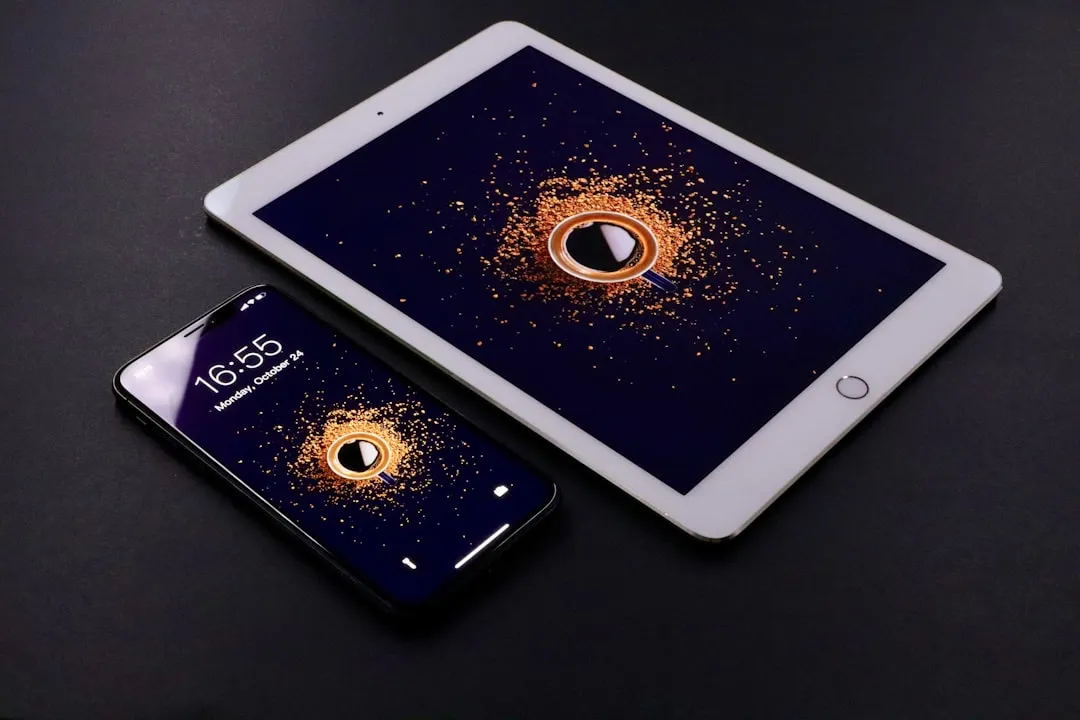
Comments
Be the first, drop a comment!